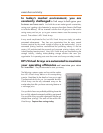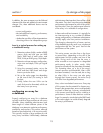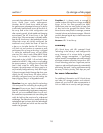
1
in storage capacity they will only become more so.
HP’s Array Virtualization is evolutionary, not
revolutionary. It is a logical progression in array
technology. It is proven. It is necessary. It is the
perfect storage area network (SAN) technology.
And it is offered only by Hewlett-Packard!
section 1
virtualization, simplification
and storage
In 2001, HP announced two new disk arrays—
the HP Surestore Virtual Array 7400 and the HP
Surestore Virtual Array 7100. This paper will focus
entirely on the virtualization technology that makes
these the easiest arrays to manage and the most
intelligently simple arrays on the market. This paper
answers the question, “What is the value
of HP’s Array Virtualization?”
For those familiar with data center environments,
virtualization is not a new concept. Virtualization
already exists to some extent at every point in the
solution stack. For example, servers, operating
systems, databases, file systems, volume managers,
drivers, switches, and storage devices all require
virtualization to achieve their purposes.
At the array level, HP’s Virtual Architecture simply
expands on already familiar ground, and it
cleanly fulfills the promise of virtualization—
it hides complexity from the administrator and
can have a dramatic and positive effect on real-
world performance.
This reduction in complexity greatly simplifies and
streamlines the data center environment.
hp’s array virtualization:
• reduces the time spent managing individual
arrays
• allows storage administrators to manage
more storage with less effort
• reduces the opportunities for human error
•
frees up precious IT resources to work on
revenue-generating projects
• self-manages the RAID configuration for
optimum performance
array virtualization defined
The purpose of virtualization in any technology
is to hide complexity from the user, or in the case
of disk arrays, to hide complexity from the storage
administrator and provide a standard environment
for application development and increased
price/performance.
Disk arrays are complex devices designed for
complex tasks. A disk array with 50 disk drives
is more complex to manage than a disk array
with one drive. Armed with virtualization, an
array could potentially allow the 50 drives to be
perceived and managed as one big drive or as
one big pool of storage. The power of virtualization
is the power of simplification.
Now for the definition: Virtualization in arrays is
about creating and managing virtual storage
devices. It is about taking blocks of storage on
the disk drives and presenting them as LUNs
(logical units of storage). What system administrators
see, then, are not the actual physical disk drives
but rather a created, simplified “virtual” view of
the actual physical storage, i.e., the LUNs.
HP’s Virtual Array works with LUNs just as traditional
arrays do. However, the virtual array doesn’t
stop there. The virtual array actually manages
the disks down to the level of the smallest available
“cluster” or “chunk.” Further, while traditional
arrays utilize static address-translation algorithms
for managing the chunks, the virtual array uses
a dynamic mapping system.
1.0
hp storage white paper
These are not trivial benefits. Data centers are
already complex, and with the continued explosion


















